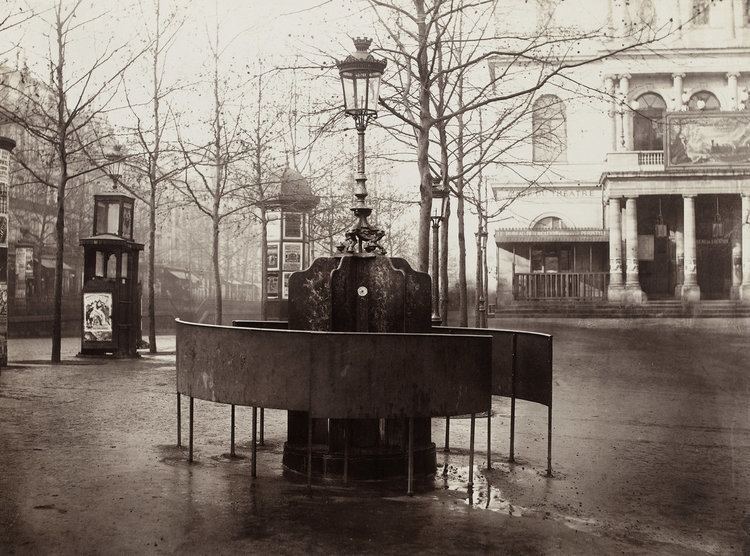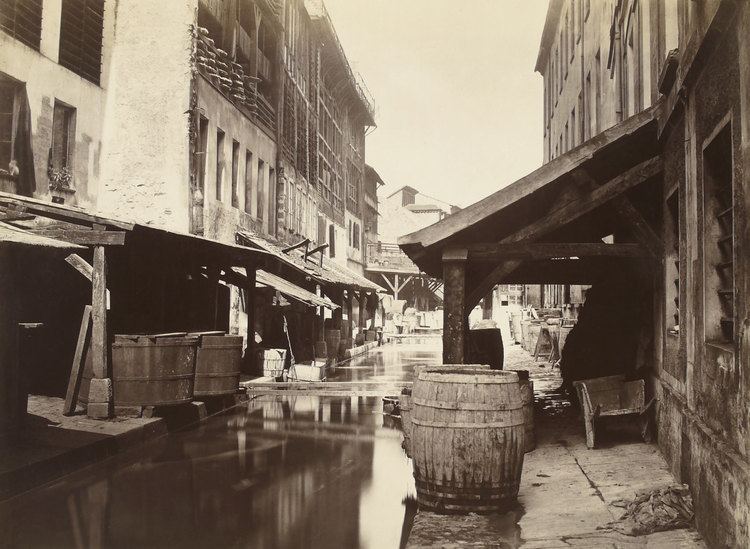Name Charles Marville Role Photographer | ||
 | ||
Artwork Monceau Park. River and Bridge, Statue of St. Thomas | ||
Charles marville photographer of paris january 29 may 4 2014 charlie rose
Charles Marville, the pseudonym of Charles François Bossu (Paris 17 July 1813 – 1 June 1879 Paris), was a French photographer, who mainly photographed architecture, landscapes and the urban environment. He used both paper and glass negatives. He is most well known for taking pictures of ancient Parisian quarters before they were destroyed and rebuilt under "Haussmannization", Baron Haussmann's new plan for modernization of Paris. In 1862, he was named official photographer of Paris.
Contents
- Charles marville photographer of paris january 29 may 4 2014 charlie rose
- Usa retrospective du photographe de paris charles marville
- Biography
- Photography
- References

Usa retrospective du photographe de paris charles marville
Biography

Marville's past was largely a mystery until Sarah Kennel of the National Gallery of Art and independent researcher Daniel Catan discovered that Marville's given name was Charles-François Bossu. That newly-found association allowed them to discover a variety of biographical information, including photographs of his family, that had been considered lost to time.

Bossu was born in 1813 in Paris. Coming from an "established" Paris family, he trained as a painter, illustrator and engraver. He assumed the pseudonym Charles Marville around 1832, and began working in his field. After 17 years, as an illustrator, he took up photography around 1850. He had no family, but a long-time companion was included in his will. He died in 1879 in Paris.
Photography

Starting in 1850, Marville began to make photographs. He traveled throughout France, Italy and Germany, using the paper negative process with great skill to create beautiful landscapes and striking architectural photographs. Many of these works were included in albums produced by the pioneering publisher Louis Désiré Blanquart-Evrard. Around 1855, Marville undertook a series of delicate cloud studies, made from the rooftop of his Parisian studio using the collodion process. More rapid and sensitive than the paper negative process, the collodion negative enabled the photographer to capture delicate, luminous cloud formations on the city's horizon—-an achievement that was noted by several critics at the 1862 Universal Exhibition in London. At the same time that he was exploring new photographic technologies, Marville expanded his practice by homing in on two lucrative areas: reproductions of artworks (including a significant body of work by the French painter and draughtsman Jean-Dominique Ingres) and architectural photographs. He excelled at both and assumed the title and related privileges of photographer to the Louvre, while he also documented building and renovation projects in Paris and the provinces for prominent French architects, including Eugène Viollet-le-Duc and Felix Duban.

In 1858, Marville was commissioned by the city of Paris to photograph the newly refurbished Bois de Boulogne, a royal park on the edge of Paris that had been transformed under the emperor Napoleon III into a site of bourgeois leisure and pleasure. Arguably his first important body of work that was conceived of and executed as a systematic series, the Bois de Boulogne series would influence his best-known work, the Old Paris photographs.
Commissioned in 1864 by Paris' agency on historic works (under the aegis of urban planner Georges-Eugène Haussmann), Marville made approximately 425 photographs of the narrow streets and crumbling buildings of the premodern city at the very moment they were threatened by demolition. Known as the "Album du Vieux Paris," the complete series of photographs are held by the Musée Carnavalet, Paris, as well as the Bibliothèque de la Ville, Paris. The State Library of Victoria, Melbourne, Australia also holds a significant collection of Marville photographs (331 photographs) gifted to the Library by the Government of France in 1881. The negatives are housed in the Bibliothèque Historique de la Ville de Paris. Marville also made many photographs of Paris in the 1870s and frequently worked for city agencies to document historic transformations of the urban environment, including civic renovation and construction projects, the establishment of new parks and the installation of a host of modern conveniences, such as the elegant new gas lamps and vespasiennes (public urinals).
